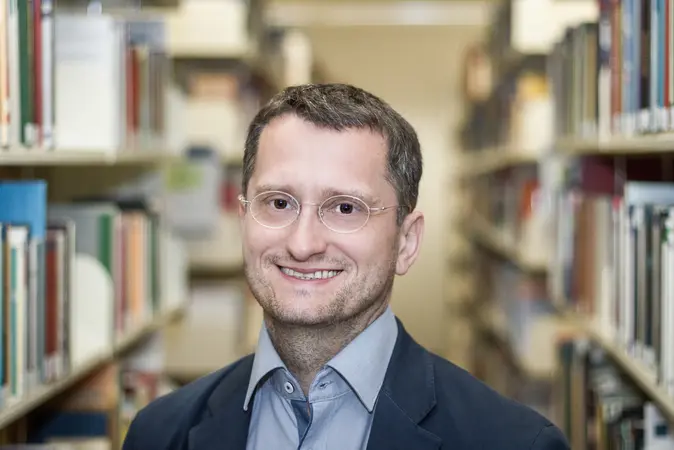Congregations as Religious “Market Players”
Megachurches in the USA are growing. Why? In his study, University of Bamberg sociologist Prof. Thomas Kern identifies three reasons for their success: less attachment to ecclesiastical traditions; religious self-realisation; and low admission barriers for new members. The sometimes massive growth of these congregations has led churches to adapt their offerings to changing demand. Beginning in October of 2019, Kern will use these acquired insights to pursue the question of how religious marketplaces emerge.
On any given weekend, as many as 40,000 Americans flock to the Lakewood Church in Houston. It’s the USA’s largest religious congregation and its complex of buildings and facilities is the size of a midsize German football stadium. Lakewood is just one of the country’s estimated 1,700 megachurches – evangelical congregations with more than 2,000 Sunday churchgoers. A handful of megachurches also exist in Europe, for instance in Britain or the Netherlands. The University of Bamberg’s department of Sociological Theory has conducted an academic study into their success. Between 2013 and 2014, department Chair Thomas Kern and research assistant Dr. Insa Pruisken interviewed over 70 employees of four megachurches in Texas. Additionally, they conducted online surveys of church members and analysed things like church guidelines. The Study was funded by the German Research Foundation (DFG).
New needs, new offerings
The researchers’ principal finding: Particularly younger people often feel only loosely connected to the ethnic backgrounds and religious traditions in which they were raised. “For a person who no longer identifies as strongly with their family’s religious background but who still wants to remain Christian, religious ‘pop culture’ can be the thing that keeps them in the church,” says Kern.
Secondly, emphases are shifting away from traditional rituals and liturgical elements towards religious self-realisation and spiritual experience. As Pruisken explains, “In order to raise visitors’ subjective well-being, megachurches are relying on popular music, sermons that are both entertaining and more relevant to everyday life, and children’s services with more varied programmes.” For any given member of a family – starting with the toddlers – there is an age-appropriate offering.
Thirdly, the admission barriers for new members are falling. Sermons and other religious content are being digitised and distributed via social media. “This represents a trend towards the removal of cultural demarcations between the religious and the secular world,” says Pruisken.
Kern considers this to be a new societal development that is influencing Protestantism as a whole in the USA. “A new institutional logic which adheres to the rules of a marketplace seems to be taking hold.” According to Kern, local congregations are increasingly moving into the roles of religious competitors with individual identities and objectives. They would more frequently perceive their congregants as a religious “clientele” to whose demands their own range of services would have to be adapted.
How do religious marketplaces emerge?
In a new research project beginning in October 2019, Kern and Pruisken will explore the question of why a market-related logic has evolved within Protestantism in the USA and how congregants’ involvement is changing. The German Research Foundation (DFG) will provide 400,000 euros in project funding through 2022. Over the course of the project, researchers will compare the formation of religious markets in two American metropolitan areas: Houston and Minneapolis-St. Paul.
An extensive, German-language article on megachurches can be found in the 2019 issue of the University of Bamberg’s research magazine “uni.vers Forschung”: www.uni-bamberg.de/univers-forschung/2019
Publication:
Thomas Kern und Insa Pruisken. 2018. Was ist ein religiöser Markt? Zum Wandel der religiösen Konkurrenz in den USA, Zeitschrift für Soziologie, https://doi.org/10.1515/zfsoz-2018-1002.
This News was translated by Ben Wilson.
Further information for media representatives:
Contact for content-related queries:
Prof. Dr. Thomas Kern
Chair of Sociological Theory
Tel.: 0951/ 863-2620
thomas.kern(at)uni-bamberg.de
Media contact:
Patricia Achter
Press Officer
Tel.: 0951/863-1146
patricia.achter(at)uni-bamberg.de
